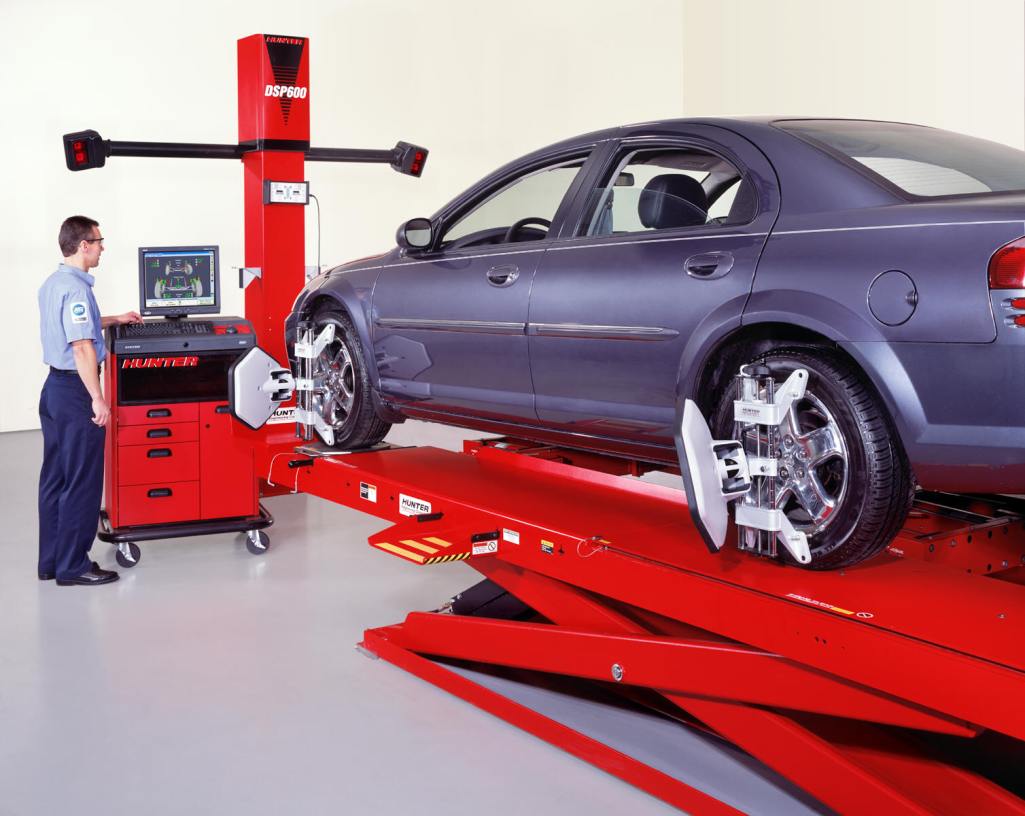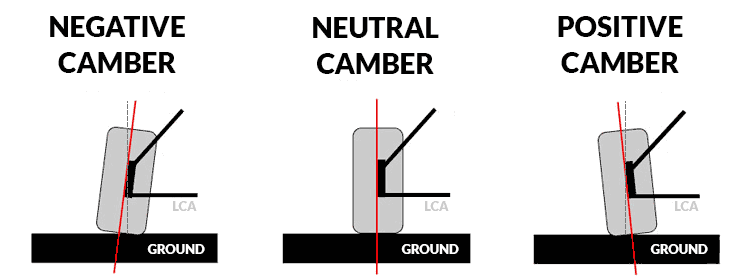Wheel alignment
The alignment of your vehicle's wheels can affect the way it handles, as well as increase the wear and tear on your tyres, and cause it to pull in one direction or the other.
Aligning your wheels is a relatively simple process, which requires the vehicle to be placed on a wheel alignment machine.
This machine uses laser guided measurements to allow the mechanic to set and adjust the suspension components back to the factory specifications.
Symptoms that your vehicle requires a wheel alignment
Taking your vehicle for a test drive with a mechanic will help narrow down if you need a wheel alignment, or if a steering or suspension component is the cause.
1 The vehicle pulls to one side
A common misconception with vehicle wheel alignments is that a vehicle that pulls slightly away from traffic over a few seconds requires a wheel alignment.
This is not always the case. Manufacturers set up the alignment with a slight pull away from traffic, so that if something happens to the driver, the vehicle will not move into oncoming traffic and cause a catastrophic accident.
However, if the vehicle pulls to one side excessively - it may need to have the wheel alignment checked.
2 The steering wheel is not straight/centered
A steering wheel that is crooked or not centred is an indication of incorrect wheel alignment - usually a toe setting that is out. This can also be caused by worn steering components. However when one of tyres got flatten then it also pulls one side in which the tyre is located
3 tyre wear
If you have noticed any unusual tire wear like what is shown. It is time to check your alignment!
Checking the wear on your tyres can give you an indication of your car’s wheel alignment.
The most common wear is on the inside or outside of the tyres. This indicates that the vehicle has excessive camber - either positive or negative, depending on if the outside or inside of the tyre is worn, respectively.
Another common sign that your wheel alignment is out, is feathering of the tyres. Excessive toe-in or out causes the tyres to wear unevenly over the surface of the tread.
This makes the edge of the tyre look and feel like a 50c piece. It will also increase road noise over the life of the tyres.
If you have noticed increased road noise at higher speeds - such as a grumbling noise, this could be the cause.
The last sign is known as cupping, where the tyre is bouncing on the road as you are driving, which causes uneven wear on certain parts of the tyre.
4 The vehicle shakes or vibrates
This issue is not usually caused by wheel alignment and is more likely caused by a failed steering or suspension component, a wheel balance issue, or slightly warped brake rotors.
5 Vehicle noises
If you hear squeaking, creaking, knocking, or rubbing, that typically indicates a steering or suspension problem.
The vehicle may require suspension or steering repairs and a wheel alignment would be required after these repairs.
Understanding your wheel alignment
Most vehicle and tyre manufacturers recommend having your vehicle’s wheel alignment checked every 6 months or 10,000km - whichever occurs first.
It is also recommended to have an alignment carried out if you hit a curb or pothole, as this can cause suspension and steering damage and also throw out the wheel alignment.
A wheel alignment service can consist of a front wheel or a four wheel alignment, depending on your vehicle type. The common alignment angles are camber, caster and toe.
1 Caster angle.
Caster is the angle in which the front suspension is positioned in reference to the vertical position.
Caster is only set on the front suspension of your car. This angle cannot be seen by eye, but must be measured with the correct alignment equipment.
On most vehicles this angle is set in a positive manner which assists in steering and vehicle stability at higher speeds. Caster also helps the wheel ‘return to centre’ after turning the steering wheel. This angle does not usually affect tyre wear.
2 Camber angle
Camber is an angle that is set, which you can actually see when looking at some vehicles.
Camber is the tilt of the top of the tyre according to how it sits on the road.
If you are looking at the wheels on a vehicle, having the top of the tyre tilting in towards the vehicle is classed as negative camber, and if the top of the wheel is tilting out from the vehicle, this is known as positive camber.
As a rule, most vehicles are set to neutral or slightly negative camber, to allow for even tyre wear, although some sports cars will allow for slightly more negative camber, to increase the handling characteristics at higher speeds.
Having too much negative camber will wear the inside of the tyre more quickly, and having too much positive camber will cause the outside of the tyre to wear more quickly.
3 Toe angle
Toe angle is the most commonly needed alignment adjustment. Toe angle is the straight ahead position of the tires.
If you think about walking with the toes on your feet pointed inwards, this would be considered toe-in.
If your feet are perfectly straight, that would be zero toe. If you pointed your feet outwards that would be toe-out.
This angle can be set on the front and rear of most vehicles and it’s typically set fairly close to zero, or straight ahead
Having too much toe - either in or out - can cause instability at higher speeds, and substantially increased tyre wear, as the vehicle is ‘fighting’ against the excessive angle of the tyres.
Vehicle Inspection
here are many inspections that need to be carried out on a car before a wheel alignment can be completed.
These include checking of the wheels and tyres, and the suspension and steering components. Failure to perform these checks may cause the wheel alignment to change shortly after being carried out.
Checking the wheels and tyre for damage and setting the air pressures in the tyres will affect the wheel alignment.
Make sure that all the wheels are of the same diameter, and all the tyres are of a correct size and have no visible damage to the sidewall or the tread surface.
Some cars have staggered size wheels, from front to back. These vehicles are safe to wheel align, as long as the tyres are the same size side to side front and rear.
The steering and suspension components also need to be checked before completing a wheel alignment.
Make sure there are no damaged components that will prohibit proper adjustment or affect the driving safety of the vehicle. These should be replaced before the wheel alignment is carried out.
Over time the suspension springs will wear out and begin to sag, which changes the vehicle ride height.
The ride height should also be checked as it affects the wheel alignment. Lower ride height will automatically increase the negative camber of the car and there may not be enough adjustment in the suspension to return this to factory specifications, which will increase tyre wear.
This is the result of worn out shock absorbers and springs, and requires these components to be replaced before a wheel alignment can be carried out.




